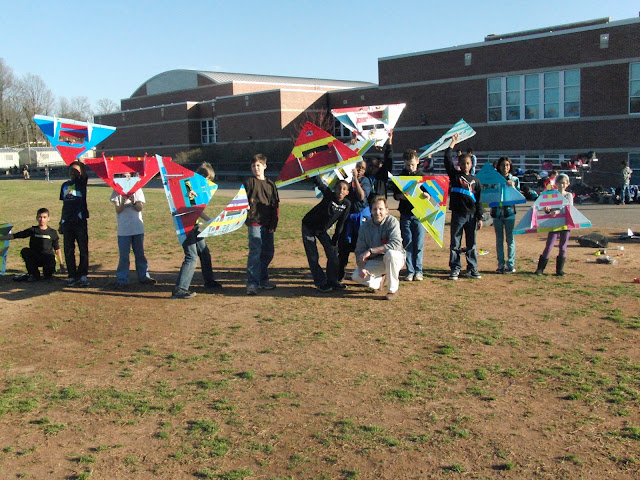This post is for those who may want to take their towel aircraft higher or simply for another flight. Below is the list of items used, besides the students airframes, to make these planes fly. This is the same list I sent out in one of the Aviation program e-mail group. It has been divided by vendor. There are only 4 different vendors.
Though it may look extensive each item was sourced to find the right items for a good price for the planes.
The hardware below was used in the Discovery Place
program airplanes to make them fly
(You can make
substitutions in many cases and still have a working airplane)
The total cost to get the
airframe each student has, flying given the list below is around $160 plus
shipping.
LOWES
Qty. 1- $5.98 each – (Coroplast) The Hillman Group Blank
Sign (this is used to build the deck that holds all of the control parts) This material is available instore.
NOTE: This
material was cut out to specs listed on the Brooklyn Aerodrome website.
Qty. 1- $? – Zip ties to hold the deck to the airframe as
well as holding the motor servos and electronics to the deck. These are
available at any hardware store.
To make the decks
easily changeable the After School Aviation program used the following item to
secure the decks to the airframe, rather than standard zip ties.
$14.00- Makedo FreePlay kit for 1. (The zip ties in these
kits are easy to remove and reuse. They do however break somewhat easily in a
crash).
AMAZON.COM
Qty. 1 - $79.98 each - Controller TTX404 4 Channel 2.4GHz TX/RX
no servos (this transmitter does come
with the receiver) http://www.amazon.com/gp/product/B0043RGYQK/ref=as_li_ss_tl?ie=UTF8&tag=brooklaerodr-20&linkCode=as2&camp=1789&creative=390957&creativeASIN=B0043RGYQK
Qty. 2 - $7.95 each – Servos Hex Tronik HXT900 micro
servo 9g / 1.6kg
Qty. 2+ - $4.52 each – Slow Fly Propeller 10x4.7 SF
HOT DEALS
Qty. 1 - $27.95 each – 400 size Outrunner Brushless Motor
A2212 and speed control. (under choose options – RPM/V or KV we chose 1400) (under
speed control we chose 20A brushless ESC for planes)
NOTE: preparing these
parts for use will require some soldering.
HOBBY KING
Qty. 1+ - $5.64
each – 1750mAh 2s 7.4V 20C Lipoly Pack (Battery Pack)
Qty. 1 pack - $2.44 per 5 pack – Male XT60 connectors
(5pcs/bag) One of these will be soldered to the power wires on the ESC
(electronic speed control)
NOTE: preparing this part for use will require some soldering.
NOTE: The charger
listed below was not used in the After School Aviation program but should be a
good low cost alternative for individuals.
Qty. 1 - $11.44– Turnigy 2S 3S Balance Charger 110/240V
input
Given a need for
vast charging needs in the EMS Lab at Discovery Place, the After School
Aviation program used the following charger.
$89.99- Quattro 4X6S Lithium Polymer multi charger
The charger was
used along with the following power supply (which also serves multiple purposes
in the EMS Lab)
Around $99 – eFuel 20A Switching DC Power Supply.
Also if you or your students want any assistance in getting their plane flying please feel free to contact me.































